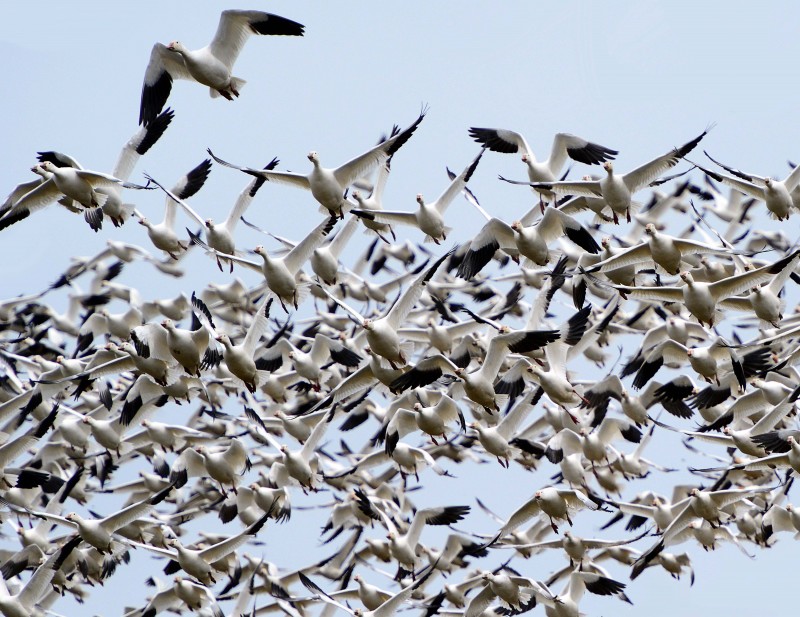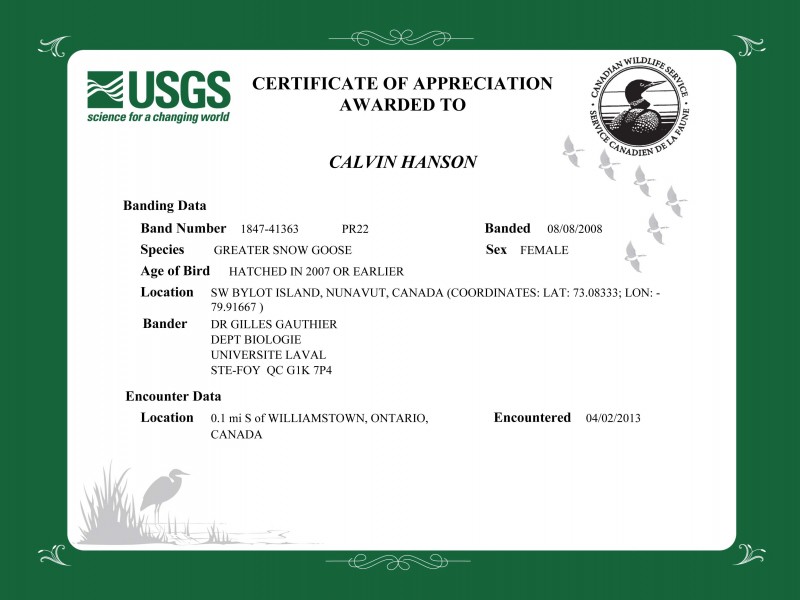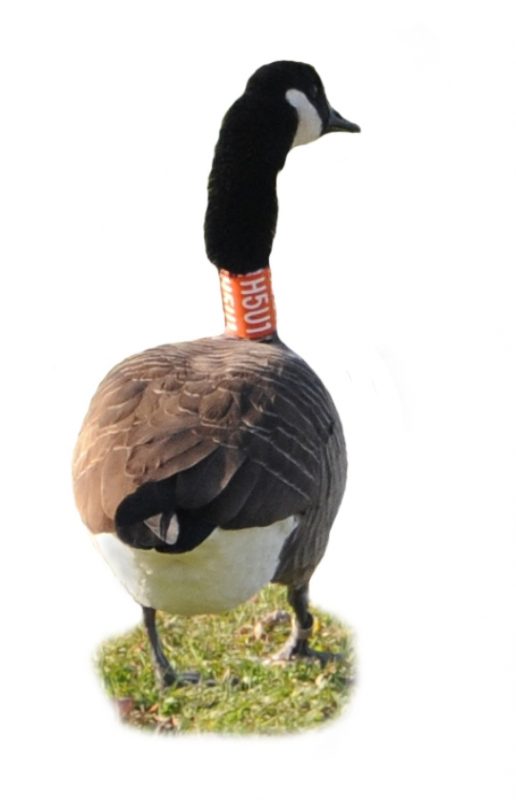
- On April 2nd, 2013, while driving the country roads looking for subjects to photograph, I came across an enormous flock of snow geese in a grass field south of Williamstown, Ontario. I photographed them for 30 minutes.
 Interestingly, one of the snow geese in the flock had a yellow neck collar with a character code consisting of four black digits “PR22”. Spotting this particular snow goose with the neck collar among what appeared to be thousands of other snow geese was pure luck – it was like finding a needle in a haystack.
Interestingly, one of the snow geese in the flock had a yellow neck collar with a character code consisting of four black digits “PR22”. Spotting this particular snow goose with the neck collar among what appeared to be thousands of other snow geese was pure luck – it was like finding a needle in a haystack.
 I reported the sighting to the Bird Banding Office, and within 24 hours they provided a Certificate of Appreciation, which confirmed and identified the bird as follows:
I reported the sighting to the Bird Banding Office, and within 24 hours they provided a Certificate of Appreciation, which confirmed and identified the bird as follows:
Species: Greater Snow Goose
Gender: Female
Banded: August 8, 2008
Band numbers: 1847-41363 PR22
Age of Bird: Hatched in 2007 or earlier
Location: SW Bylot Island, Nunavut, Canada
Coordinates: Latitude 73.08333, Longitude –79.91667
Bander: Dr. Gilles Gauthier, Dept Biologie, Universite Laval, Ste-Foy, Quebec.
 · On November 7, 2009, I encountered a similar sighting with a live Canada goose along the St. Lawrence River in Long Sault, Ontario which had an orange neck collar with a character code consisting of four white digits “H5U1” and it also had a visible leg band. I reported the sighting to the Bird Banding Office and they supplied a Certificate of Appreciation, which identified the bird as follows:
· On November 7, 2009, I encountered a similar sighting with a live Canada goose along the St. Lawrence River in Long Sault, Ontario which had an orange neck collar with a character code consisting of four white digits “H5U1” and it also had a visible leg band. I reported the sighting to the Bird Banding Office and they supplied a Certificate of Appreciation, which identified the bird as follows:
Species: Canada Goose
Gender: Female
Banded: July 10, 2008
Band numbers: 1028-89751 H5U1
Age of Bird: Hatched in 2007 or earlier
Location: St. Paul L’Ermite, Quebec, Canada
Coordinates: Latitude 45.75, Longitude –73.41667
Bander: Jean Rodrigue, QC-SCF-Sauvagine, Ste-Foy, Quebec.
The following message arrived with the Certificates of Appreciation:
The North American Bird Banding Program
Bird banding is important for studying the movement, survival and behavior of birds. About 60 million birds representing hundreds of species have been banded in North America since 1904. About 4 million bands have been recovered and reported.
Data from banded birds are used in monitoring populations, setting hunting regulations, restoring endangered species, studying effects of environmental contaminants, and addressing such issues as Avian Influenza, bird hazards at airports, and crop depredations. Results from banding studies support national and international bird conservation programs such as Partners in Flight, the North American Waterfowl Management Plan, and Wetlands for the Americas.
The North American Bird Banding Program is under the general direction of the U.S. Geological Survey and the Canadian Wildlife Service. Cooperators include the U.S. Fish and Wildlife Service, Mexico’s National Commission for the Knowledge and Use of Biodiversity and Secretary of the Environment and Natural Resources; other federal, state and provincial conservation agencies; universities; amateur ornithologists; bird observatories; nature centers; nongovernmental organizations such as Ducks Unlimited and the National Audubon Society; environmental consulting firms and other private sector businesses. However, the most important partner in this cooperative venture is you, the person who voluntarily reported a recovered band. Thank you for your help.
U.S. Geological Survey
Canadian Wildlife Service
Please Report Bands at www.reportband.gov or call 1-800-327-BAND


When we lived in Cornwall we loved going to the Upper Canada Bird Migratory Centre and every October they band the birds.
Here in Ottawa they are full and you see them a great deal along the Rideau River. I think that is one of the very few good things of Ottawa is to see some nature around. We love to walk in the parks and we run into some mallards now and then.
Snow Geese come from the Arctic so they have mighty long distance to fly and they are very powerful birds and more like animals than birds.
All you people in Cornwall get out there to your lovely parks and enjoy nature. You are so very lucky indeed to have your parks close by. You have the quiet life where the cars are not like here that drive you literally insane and take years off your life. Get out there and enjoy the beautiful nature and there is plenty in Cornwall and the beautiful surrounding town. You are so lucky.
Calvin, lovely work as usual ! Congradulations.